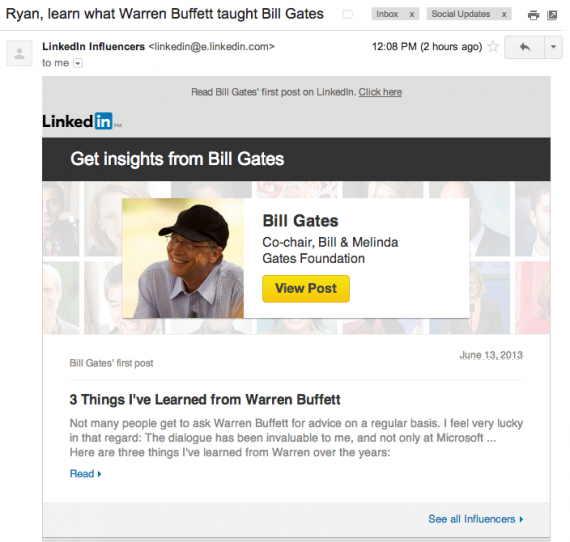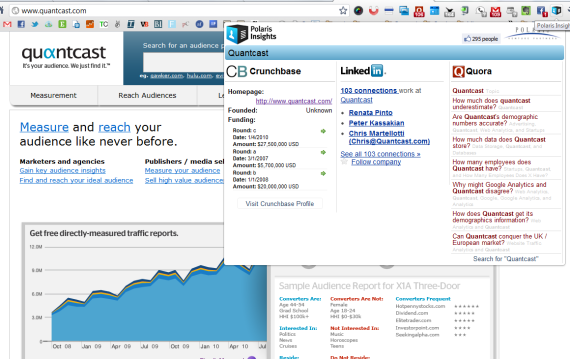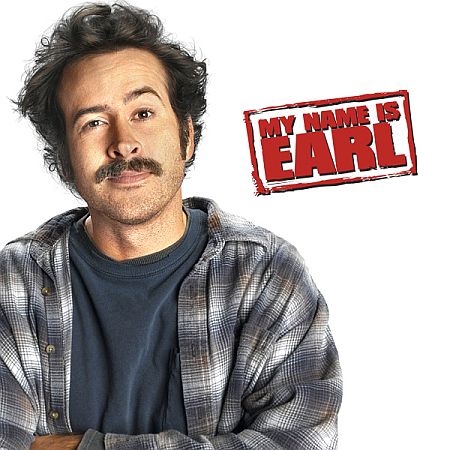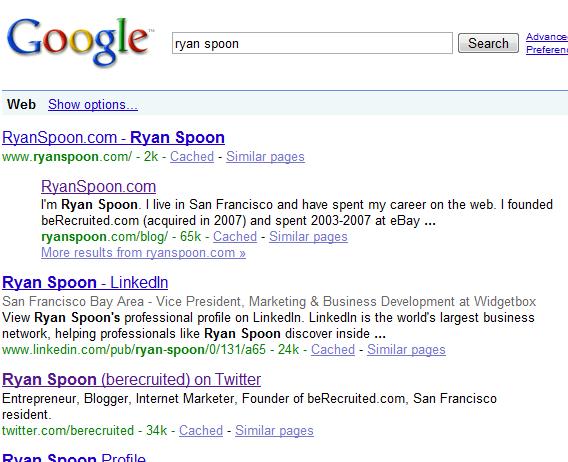I have been spending a lot of time thinking and writing about email marketing. While social media (branding, communication and advertising) gets much of the attention - email is often overlooked and under-discussed... despite being the building block for great companies:
- core to experience: Groupon, LivingSocial, ShoeDazzle, Gilt, Rue La La, etc
- conversions & engagement: Facebook, Redbox, etc
- merchandising: Amazon, Art.com, and other e-commerce providers
- communications: Zappos, Apple, etc.
Like other communication platforms, brands should treat email as a privilege. It is the rare communication that gets delivered, converts, and is trackable... and it is easy to unsubscribe from. As such, the frequency and the content need to be carefully thought out (and each of the above buckets are related - they might come from different parts of the organization - but they all arrive in the same inbox and represent the same brand!).
Here is a great email from LinkedIn (who sent a terrific engagement email to wrap up 2010):
- it is a statement of their success: 100 million users strong!
- it is targeted and rewarding: 'thanks for being one of the early users'
- it is personalized: I was member 314,285. I don't particularly care about the number - but it is a fun, nice touch that makes LinkedIn feel more personal to me.
- It is personal: 'signed' and sent from Reid (with his picture)
- While it is not actionable, but it is on brand and bolsters their relationship with me

Here is LinkedIn's 2010 Wrap Up email (see my thoughts here):

Update: TechCrunch just did a similar review. Looks like I missed out on the Innovator email - which was reserved for the first 100,000 users.










